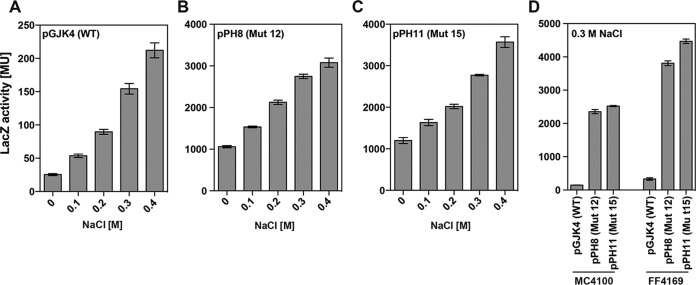FIG 6.
Transcriptional activity of the ect wild-type promoter and two of its mutant derivatives in response to sustained osmotic stress. (A to C) E. coli strains (MC4100) harboring either the wild-type ectB-lacZ reporter fusion plasmid pGJK4 (A), a plasmid (pPH8) carrying a point mutation (Mut 12) (Fig. 4A) in the ect −35 region (B), or a plasmid (pPH11) carrying a mutant ect promoter (Mut 15) (Fig. 4A) that was changed in its −10 region, −35 region, and spacer length to the consensus sequence of Sig70-type E. coli promoters (78) (C) were grown at various salinities. (D) Cells of strain MC4100 or FF4169 (otsA1::Tn10) carrying the wild-type plasmid pGJK4, pPH8, or pPH11 were grown in MMA with 0.3 M NaCl. Cultures were harvested and processed for β-galactosidase enzyme activity when they reached an optical density (OD578) of about 1.8. The data shown were derived from four independently grown cultures, and each enzyme assay was performed at least twice. β-Galactosidase enzyme activity is given in Miller units (MU) (108).

